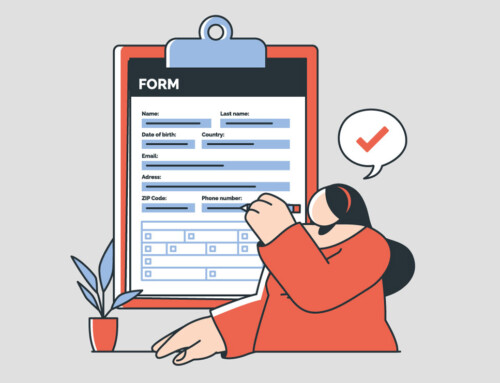Contents
Flat Fee Lawyer vs. Hourly Billing – Pros and Cons Uncovered
Choosing between a flat fee lawyer and hourly billing is a critical decision for law firms. A flat fee lawyer offers a fixed price for a specific service, providing clients with clear cost expectations. This billing model is often used for routine legal tasks, like drafting wills or handling uncontested divorces. In contrast, hourly billing charges clients for the actual time spent on a case, making it ideal for more complex or unpredictable matters. Understanding the pros and cons of both methods will help your firm optimize billing, improve client satisfaction, and increase efficiency.
Understanding Legal Billing Models: Flat Fee lawyer vs. Hourly Billing
In legal practice, billing can make or break client trust and firm profitability. The traditional hourly billing model charges clients per hour of work, while the flat fee lawyer model charges a predetermined total price for a service regardless of time spent. The hourly “billable hour” has long been the default, but alternative fee arrangements like flat fee attorney are increasingly common. In fact, about 73% of law firms now offer some form of alternative billing, with flat fee attorney models being the most popular option. Many clients prefer the predictability of flat fees – 71% of legal clients would rather pay a flat fee for an entire case – yet 71% of law firms still bill by the hour as their primary method. This tension is driving law firms to reassess their billing strategies to balance cost transparency with fair compensation.
Under an hourly model, the client bears the risk of how long a matter takes, whereas in a flat fee attorney arrangement, the lawyer assumes that risk by committing to a fixed price. Each approach has distinct pros and cons in terms of predictability, efficiency, risk, and fairness. Below, we will delve into the benefits and drawbacks of hourly versus flat fee lawyer billing, and how each impacts law firm operations, compliance, and the bottom line.
| Metric | Statistic |
| Clients preferring flat fee attorney for entire case | 71% |
| Clients prefer flat fee lawyer for specific tasks | 51% |
| Law firms offering alternative (flat/fixed) fees | 73% (all firms) |
| Law firm work handled via flat fees lawyer (AFAs) | ~25% of work (by value) |
| Increase in firms using flat fees lawyer (2016–2024) | +34% (relative growth) |
| Hourly billing still used as primary method | 71% of firms |
Table: Key Statistics on Legal Billing Preferences and Usage
As the table shows, alternative billing is no longer niche – a large majority of firms (including 70% of small firms) are open to flat fees or other alternatives. Clients clearly favor predictability, but hourly billing remains entrenched for its flexibility. The following sections break down each model in detail.

Hourly Billing: The Traditional Law Firm Standard
The firm and client agree on hourly rates (which may vary by attorney’s seniority or task). The lawyer logs time in small increments (often 0.1- or 0.25-hour increments) using timekeeping software. Periodically (e.g. monthly), the firm invoices the client for the hours worked multiplied by the rate, often with an itemized breakdown of tasks.
Hourly billing is generally favored for complex or unpredictable cases – for example, high-stakes litigation or intricate transactions where the scope of work can change dramatically. It is also common when clients demand a detailed record of work done, since hourly invoices show exactly how time was spent. Many corporate clients still default to hourly billing with negotiated volume discounts, as it ensures they pay only for actual work performed. Hourly pricing provides flexibility: if a case expands or encounters surprises, the lawyer can bill additional time, so the financial risk of complexity lies with the client rather than the firm.
Pros of Hourly Billing
- Flexibility for Uncertain Work: Hourly rates can accommodate matters with open-ended scope. The lawyer is compensated for all the time spent, which is safer if a case becomes more complex than expected. This makes hourly billing suitable for litigation and evolving cases.
- Transparency of Effort: Detailed timesheets give clients a transparent record of work performed. Clients see how much time each task took, which can justify the fees and demonstrate the lawyer’s effort.
- Aligned with Complexity and Expertise: An hourly rate can be adjusted based on a lawyer’s experience or specialty. Complex matters requiring specialized expertise can command higher rates. Clients effectively pay proportional to the level of work and skill involved.
- Simple Pricing Structure: Setting an hourly rate is straightforward compared to calculating a flat fee. Firms do not need extensive historical data; they charge a standard rate and then track time. This simplicity makes budgeting easier on the firm’s side (though not for the client).
- Less Risk to the Firm’s Profit: Because all hours are billed, the firm is less likely to “lose money” on a case. If a matter takes twice as long as estimated, the attorney will bill twice as much. In contrast, under a flat fee that misjudges effort, the attorney would eat the loss.
Cons of Hourly Billing
- Unpredictable Costs for Clients: From the client’s perspective, hourly billing is notoriously unpredictable. They have no firm idea of the total fee until the work is done, which can lead to “sticker shock.”
- Misaligned Incentives (Efficiency): Hourly billing inherently rewards spending more time on a task. There is little financial incentive for a lawyer to work faster or use technology to save time, since that would reduce billable hours.
- Administrative Burden: Tracking every 6-minute increment of time and drafting detailed invoices is a significant administrative task for law firms. It consumes non-billable time and requires diligence.
- Client Frustration and Fee Disputes: Clients often dislike receiving bills for every phone call or email and may question whether all billed time was productive. The perception of being “nickel-and-dimed” can strain client relations. Fee disputes and requests for write-downs (reductions) are common with hourly bills if clients feel the total is higher than expected or the work could have been done more efficiently.
- No Reward for Efficiency: If a lawyer finds a way to complete a task in half the time (e.g. using an AI tool or template), under hourly billing the lawyer earns less for that efficiency.
Flat Fee Lawyer Pricing: A Modern Alternative for Predictability
A flat fee lawyer (or fixed fee) is a set price for a defined legal service or project, agreed up front. In a flat fee attorney arrangement, the client pays one amount regardless of how many hours the lawyer spends. For example, a lawyer might charge a flat $1,500 for drafting a simple contract, covering all meetings, edits, and finalization, instead of billing $300/hour and tallying time. Many refer to this model as value-based billing, since the fee is based on the perceived value of the service rather than the time required.
Flat fees are commonly used for routine, predictable legal matters where an attorney has a good handle on the time and effort required. Examples include uncontested divorces, simple wills, basic LLC formations, immigration visa applications, traffic tickets, patent or trademark filings, and real estate closings. In such cases, the tasks and time involved do not vary greatly from case to case, making a fixed price feasible. Flat fees are also popular for bundled services or monthly service packages (e.g. a monthly flat retainer for a set bundle of legal services).
However, flat fees are generally avoided for highly unpredictable matters – e.g. most litigation, complex contested divorces, or criminal defense trials – because no one can reliably estimate the time those will take. Many firms adopt a hybrid approach: a flat fee for the predictable portion of work, and hourly billing beyond that. For instance, a firm might charge a flat fee for initial pleadings and negotiations, then hourly if a case proceeds to extensive discovery or trial. This is sometimes called “flat fee plus” or a capped fee with overage.
Pros of Flat Fee Attorney Billing
- Cost Predictability for Clients: Flat fee lawyer model give clients upfront certainty about what they will pay. There are no surprises – the client can budget exactly, which is a major relief for individuals and businesses alike.
- Incentive for Lawyer Efficiency: With a flat fee attorney, the lawyer’s effective hourly rate increases the more efficiently they work. If you can finish the job in 5 hours when you estimated 7, you keep the difference as profit.
- Simplified Billing and Fewer Disputes: Flat fees simplify the billing process for the firm. There is no need to generate lengthy time logs for each invoice; billing becomes a matter of a quick invoice with the fixed amount. Law firms can often send flat fee invoices immediately upon completing a matter (or on a set schedule) – firms using flat fees are over 5× more likely to bill clients immediately after work, rather than monthly or delayed.
- Improved Cash Flow and Upfront Payment: Flat fees are often collected as a lump sum in advance. This means the firm does not have to chase receivables each month or worry about hours going unbilled. You get paid in full at the start or early in the matter.
- Competitive Marketing and Client Satisfaction: Offering flat fees can be a marketing advantage. It differentiates a firm by offering clients a clear, no-surprise pricing model, which many clients (especially small businesses and individuals) find attractive.
Cons of Flat Fee Lawyer Billing
- Risk of Underestimating Work: The biggest risk of flat fees is pricing the fee too low. If a matter turns out to be more complex or time-consuming than expected, the lawyer must still complete it without additional compensation. This can erode or eliminate profit on that case – or even turn it into a loss – if the misjudgment is large. For example, if you charge a flat $5,000 for a case assuming ~20 hours of work, but it ends up requiring 40 hours, your effective rate drops by half. Consistently underestimating can hurt a firm’s finances and even lead to burnout from overwork.
- Difficulty Setting the Right Price: Determining a “reasonable” flat fee is complex. Lawyers must analyze past cases, consider all possible complications, factors in overhead costs, and decide on an appropriate profit margin. It requires more upfront analysis than simply quoting an hourly rate. If set too high, clients will not bite; if set too low, the lawyer undercuts themselves.
- Scope Creep and Out-of-Scope Work: Flat fees work best when the scope of work is tightly defined. If a case grows beyond the defined scope (e.g. additional contract drafts, extra hearings, multiple redrafts because a client keeps changing their mind), the lawyer faces a dilemma: do the extra work for free (losing money) or try to renegotiate or convert to hourly for the excess, which the client may resist.
- Not Suitable for All Matters: As noted, flat fees are inapplicable or risky in many cases. If a matter is highly contingent on external factors (e.g. opposing counsel’s actions, court scheduling, regulatory approvals), locking in a flat price can be dangerous.
- Potential Client Perception Issues: While most clients love flat fees, there is a flipside: if the work concludes very quickly or with little apparent effort, a client might feel they overpaid for what was delivered. For example, if a lawyer charges a flat of $3,000 for a matter that, from the client’s viewpoint, wrapped up after one brief meeting and a short document, the client might wonder if it truly cost that much.
| Factor | Hourly Billing (Traditional) | Flat Fee Billing (Fixed) |
| Cost Predictability | Low – The total cost is uncertain and varies with hours. Clients face open-ended bills. | High – The total cost is fixed upfront, giving clients certainty. Easier client budgeting. |
| Incentive for Efficiency | Weak – The firm earns more by taking more time. Little incentive to streamline (could lead to inefficiency). | Strong – The firm profits by finishing work efficiently. Encourages use of technology and optimal processes. |
| Risk of Overrun | Client’s Risk – If matter is complex or drags on, client pays more (lawyer’s revenue increases). | Lawyer’s Risk – Fee is capped regardless of unexpected complications; lawyer may earn less if case needs more work. |
| Billing Process | Labor-intensive – requires detailed time tracking, invoicing each hour with descriptions; potential billing disputes over entries. | Streamlined – one price means simpler invoice, minimal time-tracking needed. Fewer disputes since no line-item surprises. |
| Client Perception | Anxiety – clients may worry about runaway costs and scrutinize bills; can feel “nickel-and-dimed” by each charge. | Relief – clients appreciate knowing the cost up front. Builds trust, though they must trust quality will be delivered for the fee. |
| Profit Potential | Stable – Firm is assured to bill all time spent; but no extra reward for finishing early. Can raise rates or hours to increase revenue. | Scalable – If priced well, firm can earn higher effective rates by increasing efficiency. However, mispricing can hurt profits if not managed. |
Table: Hourly vs. Flat Fee – Comparison of Key Factors
Efficiency, Compliance, and Financial Impact of Billing Choices
Beyond client preferences, the choice between hourly and flat fee billing can significantly affect a law firm’s operational efficiency, ethical compliance, and overall financial performance. These dimensions will now be examined in detail.
Efficiency and Workflow: Billing model can shape how lawyers work and how firms invest in technology. Under hourly billing, time is literally money – so any non-billable activity (administration, business development, etc.) is seen as lost revenue. Firms must guard against wasted attorney time. Paradoxically, however, hourly billing disincentivizes time-saving innovations for billable tasks (since those reduce billable hours). On the other hand, flat fee arrangements motivate firms to streamline workflows aggressively to preserve profit. Many flat fee lawyers develop standardized processes, checklists, and use practice management software to automate routine tasks. Law firms using flat fees get their bills out faster and close cases faster than those on hourly billing – a sign that flat fee firms push to wrap matters efficiently. The table below provides a comparison between flat fee and hourly billing models:
| Efficiency Metric | Advantages with Flat Fee Billing |
| Speed of sending invoices | 5× more likely to send bills immediately after work is done (vs hourly firms). |
| Prompt client payment received | Nearly 2× more likely to be paid by clients immediately (vs hourly). |
| Time to case closure | Cases close ~3× faster on average when billed flat fee (vs hourly). |
| Non-billable time tracking needed | Significantly reduced – flat fee lawyers need not log every minute, freeing up admin time. |
| Billing disputes | Reduced – clear pricing lowers the chance of fee disputes or write-downs, improving realization rates. |
Table: Efficiency Metrics – Flat Fee vs. Hourly Billing
These efficiencies can translate into higher realization and collection rates. Notably, however, if a flat fee bill is not paid immediately, it actually becomes more likely to go unpaid overtime than an hourly bill.
Both Models Have Considerations
- Trust Accounting: Many jurisdictions treat advance flat fee payments as client funds that must be held in a trust account until the work is performed, unless the fee is clearly agreed as non-refundable or earned on receipt. Mismanaging flat fee retainers can lead to ethical violations.
- Billing Transparency and Fairness: ABA Model Rule 1.5 requires that fees (hourly or flat) be reasonable and communicated to the client. For hourly billing, this means no padding hours or billing for time not actually spent – something the ABA reinforced in Formal Op. 512 regarding using AI (you cannot charge 5 hours for a memo AI helped you draft in 1 hour).
- Client Consent to Fee Structure: Some clients, especially sophisticated ones, may have policies or preferences for certain billing models. In corporate settings, legal departments often require budgets or caps even if hourly rates are used. Firms that can accommodate alternative arrangements might have a competitive edge in client compliance. According to a Bloomberg Law survey, nearly 80% of corporate legal departments negotiate discounts or alternative fee deals with law firms.
- Financial Impact and Profitability: The financial implications of hourly vs flat largely boil down to risk and reward. Hourly billing offers steady, if somewhat linear, revenue tied to effort. Utilization (how many hours are billed per attorney) directly drives income.
- Flat fees introduce more variability: a well-priced flat fee can yield a higher profit margin than hourly for the same work (especially if the firm leverages tech to do it faster). Indeed, some attorneys find they earn more revenue under flat fees for routine matters than they did billing hourly, because they have optimized the work and the flat fee captures the value delivered rather than just time.
Conversely, flat fees carry the hazard of underpricing, which eats into profits. Managing a portfolio of flat fee cases requires careful tracking of how actual time is spent compares to assumptions. Many firms track internal time on flat fee cases for analysis (though not for billing). If a pattern of “over-delivering” for the fee emerges, the firm must adjust the pricing or scope to remain profitable. The most successful flat fee practices treat pricing as an iterative data-driven process, constantly refining fees to match reality.
Choosing the Right Billing Model for Your Law Firm
There is no one-size-fits-all answer to whether you should charge hourly or flat fees – the optimal billing method depends on several factors. Savvy firms evaluate each matter and consider case complexity, predictability, client preferences, market standards, and the firm’s own capacity. Here are the key considerations to guide the choice:
- Type of Service and Complexity: If the work is standardized or routine (e.g. forming an LLC, uncontested divorce, drafting a simple will), a flat fee is often advantageous for both lawyer and client. These tasks have predictable workflows that lend themselves to fixed pricing. In contrast, if a matter is complex, high-risk, or has unpredictable twists (major litigation, complicated negotiations, anything heavily dependent on external factors), hourly billing or a hybrid is safer.
- Client’s Needs and Expectations: Know your client. Some clients explicitly prefer flat fees so they can plan their budget – they may even be willing to pay a premium for the certainty. Other clients (especially those who have worked with attorneys before) might be comfortable with hourly billing as long as you provide estimates and keep them updated. Always discuss billing preferences early. If a client has a fixed budget cap, a flat fee or capped fee arrangement can help ensure you do not exceed it.
- Firm’s Financial Model and Expertise: Consider your firm’s ability to absorb risk and track data. If you have solid historical data on a type of matter and confidence in your efficiency, flat fees can increase profitability and give you a competitive edge. But if you are early in practice or entering a new area, you might start with hourly or a conservative flat fee until you gather more data.
- Market and Competition: Research into what competitors in your region and practice are doing. If all the other estate planning attorneys offer flat packages for wills and trusts, clients will expect you to do the same. Conversely, if no one is offering flat fees for complex litigation in your area, you might either steer clear or proceed very carefully with pricing if you try it.
- Hybrid Approaches: Do not forget that you can combine methods. Many firms successfully use hybrid billing – for example, charge a base flat fee for the most predictable portion of a matter, and then an hourly rate for anything unanticipated beyond that. Another example is a contingency or success bonus combined with reduced hourly (common in litigation, where a client might pay a lower hourly rate plus a bonus if the outcome is favorable).
- Communicate and Document Clearly: Whichever model you choose, crystal-clear communication with the client is essential. For hourly matters, provide cost estimates, keep the client informed about accrual of hours, and alert them if work might exceed initial estimates.
Selecting the appropriate billing structure is not a one-size-fits-all decision—it depends heavily on the nature of the legal matter, its complexity, and client expectations. To guide your decision-making, the following table outlines common types of legal services, along with recommended billing models and the rationale behind each choice. This comparison highlights where flat fees, hourly rates, hybrid structures, or contingency models are most effective, helping firms align pricing with both business needs and client satisfaction.
| Legal Matter | Suggested Billing Model | Rationale |
| Drafting a basic will or trust | Flat Fee (e.g. fixed package price) | Predictable, standardized task – easy to scope and clients expect upfront cost. |
| Uncontested divorce or immigration visa | Flat Fee (for defined scope) | Typically, routine process if uncontested; clients value certainty during stressful processes. |
| Complex civil litigation | Hourly (possibly with phased flat fee components) | Highly unpredictable in duration and work required\; hourly ensures lawyer is paid for all effort. |
| Mergers and acquisitions deal | Hourly or Capped Hybrid | Large transactions can be unpredictable, but clients may want a fee cap; start hourly with a cap or success fee. |
| Trademark registration (standard) | Flat Fee | Process is uniform (search, application); many firms successfully offer flat fees here. |
| Ongoing corporate counsel (external GC) | Monthly Flat Fee Retainer | Ongoing advisory work can be covered by a monthly flat fee for a set scope, providing steady income and cost certainty. |
| Personal injury plaintiff case | Contingency (percentage of recovery) or Hybrid | These are traditionally contingency fee because clients cannot pay hourly and fees depend on the outcome. (Contingency is outside flat/hourly scope, but a hybrid of small flat + smaller contingency is used by some.) |
| Regulatory compliance advice (ad hoc) | Hourly (as-needed billing) | If questions arise unpredictably and sporadically, hourly on an as-needed basis might be simplest. |
Table: Examples of Which Billing Model Fits Best
In practice, many small-to-midsize firms find that adopting flat fees for certain high-volume, low-variance services can boost their revenue and client base, while retaining hourly billing for complex or one-off matters.
Conclusion: Finding the Balance in Legal Billing
Both flat fees and hourly rates have a rightful place in modern legal practice. As we have seen, hourly billing offers flexibility and ensures you are paid for every minute of work – it is often the safe choice for unpredictable cases. In contrast, flat fee billing provides clients with certainty and pushes law firms to become more efficient and value-driven, which can ultimately increase profitability and client loyalty. The “best” choice depends on the context: the type of matter, the client’s needs, and your firm’s capabilities.
In many cases, the optimal solution is not either/or, but a balanced approach. By using flat fees where they make sense and hourly rates where they are necessary, a law firm can maximize benefits and minimize downsides. The legal industry’s trend is clearly toward greater use of alternative fees – driven by client demand for transparency and by technology making legal work more efficient. Embracing flat fees (and other creative billing models) can differentiate your firm and align it with these trends, if you implement them thoughtfully. Monitor your results, stay flexible, and adjust your pricing strategies as you learn. In doing so, you will build trust with clients, stay competitive, and ensure your firm is fairly rewarded for the value you deliver.
Simplify Your Legal Billing with RunSensible
Whether you are offering a flat fee lawyer service or billing by the hour, RunSensible is here to streamline your practice’s billing process. Our all-in-one legal software helps you manage flat fee and hourly billing with ease, giving you the flexibility to choose the best approach for each case. With features like automated time tracking, customizable invoicing, and seamless online payment integrations, RunSensible ensures you get paid faster and more accurately—every time. Ready to enhance your billing efficiency and client satisfaction? Start using RunSensible today and see how easy managing flat fee attorney services can be!
FAQs
What is a flat fee for a lawyer?
A flat fee for a lawyer is a fixed price charged for a specific legal service or case, regardless of the time spent. For example, a flat fee lawyer may charge a set amount for services like drafting a will or handling an uncontested divorce. The fee is agreed upon upfront, providing clients with cost certainty. Flat fees are often used for routine legal matters where the work required is predictable. This model benefits clients by eliminating hourly billing surprises and encourages efficiency on the lawyer’s part.
Is it better for a lawyer to charge a flat fee or hourly rate?
The choice between a flat fee lawyer or hourly billing depends on the type of case. Flat fees are ideal for routine, predictable tasks like simple contracts, wills, or uncontested divorces, offering clients cost certainty. Hourly rates, on the other hand, are better for complex or unpredictable cases, such as litigation, where the lawyer cannot estimate the time required. Many law firms use a mix of both, depending on the service provided and the client’s preferences.
How do attorneys determine a flat fee amount?
Attorneys determine a flat fee by estimating the time, complexity, and resources required for a particular case. They look at previous similar cases, factoring in potential challenges and overhead costs. A flat fee lawyer also considers the value of the service provided and the client’s needs. After evaluating these factors, they set a price that fairly compensates for the work involved. Flat fees should be reasonable and reflect the complexity and market conditions of the service offered.
Can a law firm use both flat fees and hourly rates?
Yes, many law firms use a combination of flat fees and hourly rates. For example, a lawyer might offer flat fees for routine services like contract drafting or estate planning but charge hourly rates for more complex cases such as litigation or negotiations. Hybrid billing models can also be used, where a flat fee covers part of the work, and hourly rates apply to any additional services outside the original scope. Offering both models provides flexibility and meets a wider range of client needs.
Are flat fee arrangements ethical for lawyers?
Flat fee arrangements are ethical if they are reasonable, clearly outlined, and comply with professional conduct rules. Lawyers must ensure the flat fee is appropriate for the work being done and not excessive. Flat fees should be agreed upon in writing with clear terms on what is included. Many jurisdictions require flat fees to be placed in trust accounts until earned. When structured properly, flat fee billing is ethical and beneficial, providing clients with clear, upfront costs and promoting efficiency in legal services.
Sources
Disclaimer: The content provided on this blog is for informational purposes only and does not constitute legal, financial, or professional advice.






